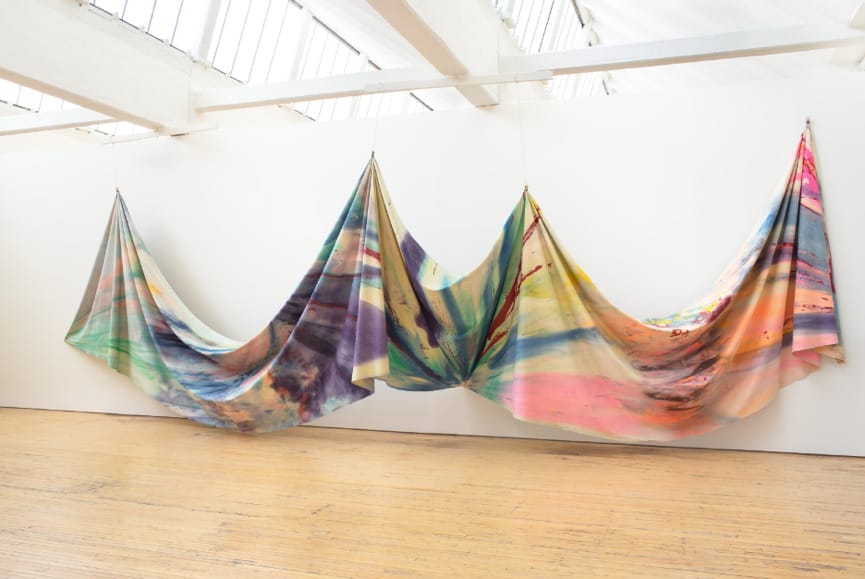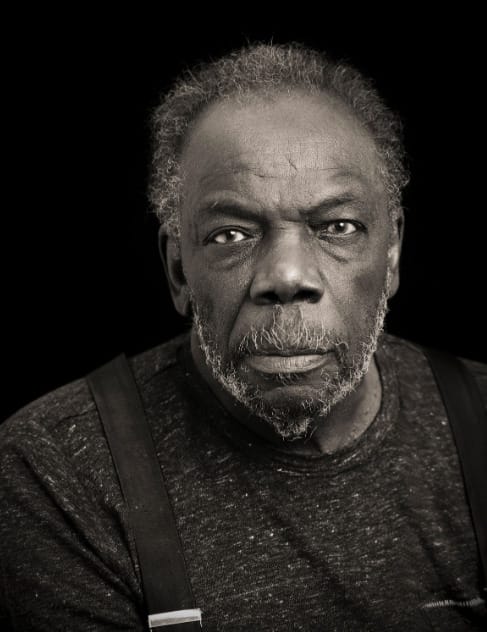Pace Gallery and David Kordansky Gallery are saddened to announce that artist Sam Gilliam passed away on Saturday, June 25 at age 88.
Throughout his seven-decade career, Gilliam reinvented and continuously reshaped abstract painting and sculpture. Incorporating rich constellations of forms, textures, and materials to forge inventive compositions, his work has exerted a profound influence on subsequent generations of artists.
Born in Tupelo, Mississippi in 1933, Gilliam was one of the leading figures associated with the Washington Color School—a movement initiated in Washington, D.C. in the 1950s that emphasized large fields of color as a response to the Abstract Expressionist works that emerged from the New York School. He quickly distinguished himself from his peers with the creation of his signature Beveled-edge and Drape paintings in the mid- to late 1960s. During these formative years, Gilliam produced the Beveled-edge paintings by folding unstretched canvas before staining it with acrylic paint to create dimensional, lyrical abstractions, which were then stretched across beveled frames.
His most radical move came next: he freed the canvas from the stretcher and brought his painterly compositions out into space, using unstretched canvas to create his celebrated Drapes. These groundbreaking works, which the artist began producing in the late 1960s, changed the history of art. By suspending his stained canvases from ceilings and walls, Gilliam transformed the medium of painting and its relationship to the spatial and architectural context in which it is viewed. Moving beyond an aesthetic proposition, Gilliam’s work also forged new possibilities for defining art’s role in a society undergoing dramatic social change. After earning international recognition for these innovations, Gilliam represented the United States at the Venice Biennale in 1972 as part of a group presentation organized by Walter Hopps.

Building upon his work of the 1960s, Gilliam continued to push the boundaries of his practice in the decades that followed, employing new techniques that challenged the traditional understanding of what constitutes the medium of painting. In the 1980s, he developed his Quilt paintings—works comprising multiple layers of thick acrylic paint on canvas that are cut into geometric shapes and rearranged into abstract patterns. Gilliam’s recent works include large-scale paintings on paper and wood, as well as numerous major site-specific public commissions, including Yet Do I Marvel—a commission for the lobby of the National Museum of African American History and Culture that opened in his hometown of Washington, D.C. in 2016—and Yves Klein Blue, a large-scale nylon Drape painting presented at the Giardini’s main pavilion at the Venice Biennale in 2017.
In 2012, Gilliam joined David Kordansky Gallery, which has shown four solo exhibitions with the artist over the past decade. In 2021, the gallery presented Moving West Again, which was accompanied by a publication featuring an essay by the jazz pianist, composer, and artist Jason Moran.
Since joining Pace in 2019, the artist has been the subject of solo exhibitions at the gallery’s New York, Seoul, Hong Kong, Geneva, and Palm Beach locations. In 2020, Pace Publishing released the book Existed Existing, featuring texts by Courtney J. Martin, Fred Moten, and Hans Ulrich Obrist.
Sam Gilliam: Full Circle is on view at the Hirshhorn Museum and Sculpture Garden in Washington, D.C. through September 11, 2022. His work Double Merge remains on public view at Dia Beacon.
